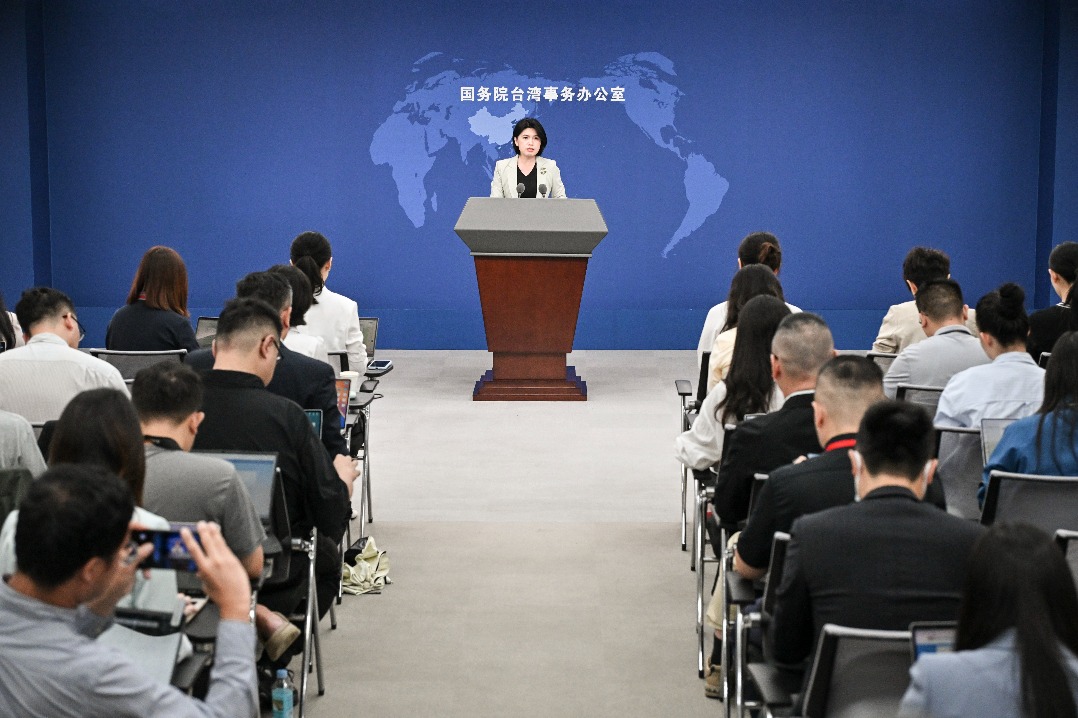Stability, sustainability key to solid macroeconomy

Editor's note: Premier Li Keqiang delivered the Government Work Report at the opening of the fourth session of the 13th National People's Congress on March 5. He set clear goals and major tasks for this year as well as the 14th Five-Year Plan period (2021-25). Among them, the GDP growth target, fiscal policy and monetary stance have caught wide attention. Here, China Daily presents considered views on two key topics from top experts of China Finance 40 Forum (CF40), a think tank dedicated to policy research on economics and finance.
GDP growth target
China did not set an economic growth target in the 2020 Government Work Report due to the COVID-19. But the country's GDP still grew by 2.3 percent in 2020, making China the only major economy to achieve positive growth in the first year of the pandemic.
In this year's Government Work Report, China resumed the convention of setting the year's GDP growth target. This year, the relevant figure is over 6 percent.

Xiao Gang, a member of the 13th National Committee of the Chinese People's Political Consultative Conference, the nation's top political advisory body, and former chairman of the China Securities Regulatory Commission:
The GDP growth target of over 6 percent for this year is a positive and steady move that is seeking truth from facts. As a comprehensive index showing the results of economic development, GDP, in spite of its limitations, is an important economic indicator, which is closely related to employment, investment, consumption, import and export indexes. Therefore, Chinese policymakers should continue setting a GDP growth target every year.
Some international organizations and market institutions forecast that China's GDP will grow by more than 8 percent this year. It does not mean the Chinese economy will return to high growth. Instead, it means the low base effect will affect the country's GDP growth this year. If the average GDP growth for last year and this year is calculated, people will find that the average growth will be lower than 6 percent annually.
Besides, this year is the beginning of the 14th Five-Year Plan period (2021-25). So, setting a GDP growth target of over 6 percent will be conducive to a smooth transition to future targets and the realization of sustainable development.
Given the current circumstances, setting a growth target will not lead to the problem of the one-sided pursuit of GDP numbers, but will be beneficial for China to concentrate on pushing forward reforms and innovations, as well as promoting high-quality development.

Liu Yuanchun, vice-president of the Renmin University of China:
The series of anticipated development goals this year shows the mindset of bottom line management, which means relevant economic indicators must reach a corresponding level of growth to ensure a continuous healthy recovery of the economy.
Achieving a GDP growth of over 6 percent would mean that resident income growth will likely reach about 5 percent, nominal corporate profit growth will likely reach 7 to 8 percent, and nominal fiscal revenue growth will likely reach 5 to 6 percent.
While sticking to the bottom line of sustaining economic growth, China should give more space to other development goals and devote more efforts to restructuring the economy, promoting reforms and controlling risks.
No sharp turns
The Government Work Report this year said that China will carry out the task of ensuring the continuity, consistency, and sustainability of macro policies to keep major economic indicators within an appropriate range.
"We will avoid sharp turns in policy; instead, we should make adjustments and improvements based on new developments to reinforce the fundamentals of the economy," the report said.
In its fourth-quarter monetary policy implementation report, the People's Bank of China, the central bank, said it will consolidate the achievements of loan interest rate cuts in real terms.
The Government Work Report said China will further lower loan interest rates in real terms, which is slightly different from the expressions in the PBOC report. It shows that the turn in monetary policy may be slower than market expectations.

Zhang Bin, senior fellow at the Institute of World Economics and Politics of the Chinese Academy of Social Sciences:
In January, the consumer price index, the main gauge of inflation, fell 0.3 percent from a year earlier, and the producer price index rose only 0.3 percent year-on-year. Even if the rise of the indexes will accelerate to some extent, the increase will be limited.
In sub-indices of the Manufacturing Purchasing Managers Index, the employed person index dropped 1.2 percentage points from the previous month to 48.4 percent in January. A reading below the 50-point mark separates growth from contraction.
These numbers show that there is still some distance to go for China to realize the main goal of monetary policy, which is to achieve moderate inflation and full employment. Therefore, China's monetary policy should remain relatively loose in the short term.
The major risk that we need to pay close attention to is that macroeconomic performance can't return to normal for a long time or may even fall into a double-dip recession. In addition, the rise in nonperforming loans at financial institutions and the increase of defaults in financial markets also deserve our attention.
The Government Work Report said China will enhance the quality, efficiency, and sustainability of its proactive fiscal policy. The direction of fiscal policy reforms will shift toward increasing budgetary expenditure while controlling and reducing off-budget expenditure that is actually led by local governments, especially non-public welfare expenditure, in an orderly manner.
Policymakers should coordinate monetary and fiscal policies. In the current economic environment, China should keep its interest rates at a fairly low level to reduce fiscal pressure.
The government should often use standard macroeconomic policy instruments, including interest rate and budgetary fiscal policies, and control well the use of certain policy instruments like borrowing via local government financing vehicles.
Multiple measures need to be taken to defuse hidden debt risks of local governments. For example, China should adopt a more proactive monetary policy, which will make greater contributions in terms of ensuring growth and securing employment, while maintaining the appropriate strength of budgetary expenditure to reduce the pressure on local government borrowing with the aim of ensuring growth.
Liu Yuanchun:
China has set the deficit-to-GDP ratio for this year at around 3.2 percent, which means the deficit will still reach about 3.5 trillion yuan ($539.7 billion) due to a large increase in the economic growth base this year.
According to estimates made by many research groups, China's nominal GDP will grow by nearly 12 percent year-on-year this year. It means that fiscal revenues will increase by 8 to 9 percent this year.
The Government Work Report said general transfer payments to local governments will be increased by 7.8 percent, which is significantly higher than last year.
At the same time, 2.8 trillion yuan of central government funding, a figure much larger than last year, will be directly allocated to prefecture-and county-level governments to benefit businesses and people.
We will see strong sustainability and operability of the country's fiscal policy this year.
Xiao Gang:
The key to managing the links between economic recovery and risk prevention is to ensure the continuity, stability and sustainability of macro policies, stressing on the timing, effects and proper limits of policies.
On the one hand, the foundation of Chinese economic recovery is not yet solid. The government must maintain necessary support for the economy and avoid sharp turns in macro policies.
On the other, the country should make timely adjustments based on the changes in situations and exit from some of its economic support policies adopted in special periods in a steady manner.

Today's Top News
- 26 foreign leaders to attend China's V-Day commemorations
- Artificial intelligence can power Xizang's leap into a better future
- Export of trade in services a priority
- SCO helping develop a multipolar world order
- Tajikistan looks to China for deeper ties
- High-tech manufacturing lifts industrial profits






























